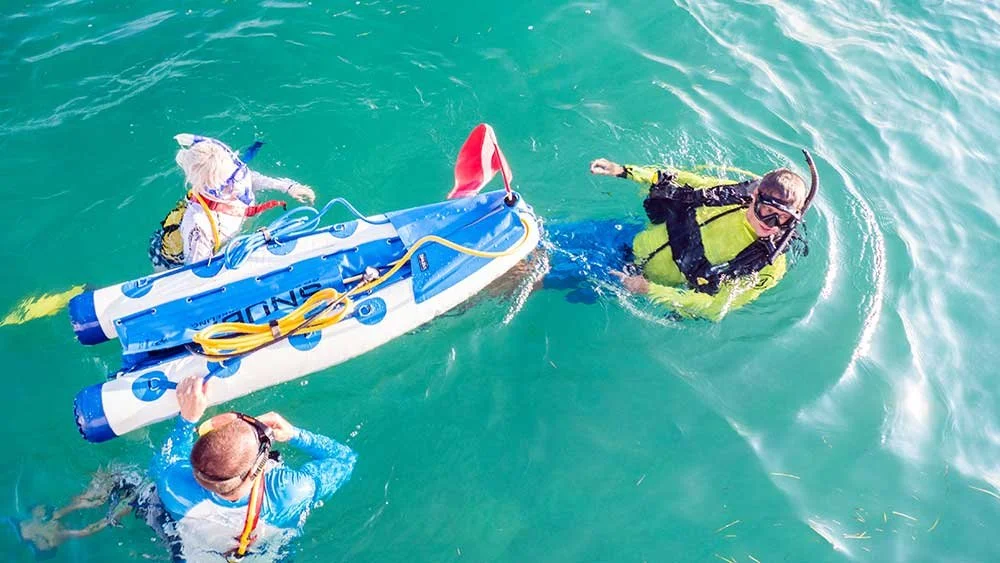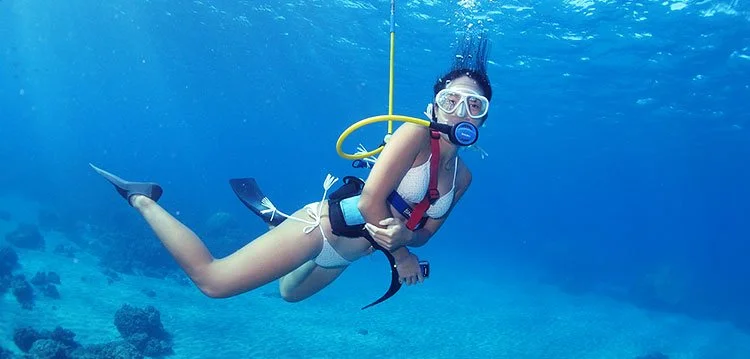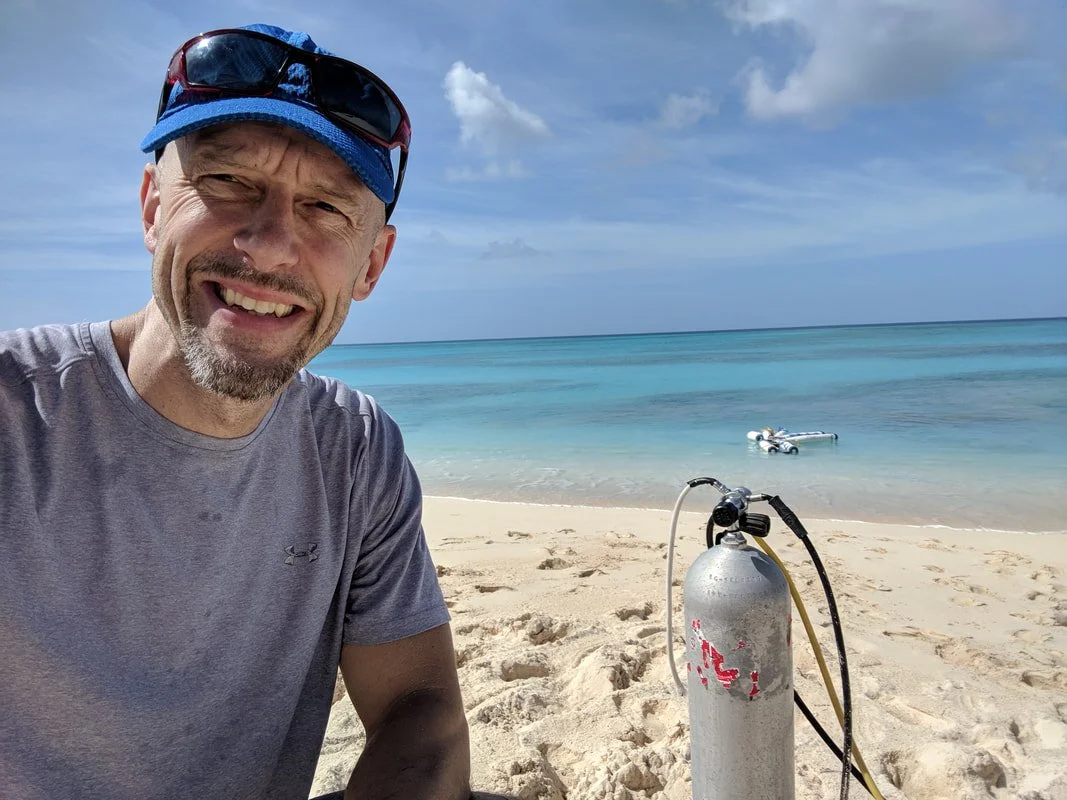What Is Snuba? I Give the Fun Watersport a Try in Grand Turk.
The snuba tank pontoon stays at the surface while we swim below the surface and get air via a long tube.
I love to snorkel. Yet, I have always been intimidated by the idea of scuba diving.
I mean, I just can't seem to get past the idea that I will be so deep underwater and breathing through a mouthpiece (regulator) attached to a tank on my back, with a weight belt holding me down in the depths.
I aim to be a perpetually positive person, but I have a nagging feeling that I will panic while I scuba dive, that something will go wrong, and I won't have the easy way out to simply be able to pop my head up above the surface to regroup and grab a few breaths of fresh air to refill my lungs.
I can handle a lot of adverse situations and challenging adventures, but I haven't yet discovered how to survive without air to breathe.
During my sailing with Princess Cruises to the Caribbean on the ship Crown Princess, I decided to give snuba a try during our port call in Grand Turk, Turks and Caicos. I figured snuba offered the perfect chance to ease my way toward scuba diving.
Four other cruisers joined me on the excursion offered through Oasis Divers in Grand Turk, and we were all trying snuba for the first time. I introduced myself to the others as our guide, Big John, gathered us into his van to take us to a little beach at the edge of Cockburn Town.
A hybrid of snorkeling and scuba diving, snuba gives you more flexibility to enjoy the underwater world in the Caribbean.
Big John, a 6-foot-4 and 245-pound Jamaica native who has lived in Grand Turk almost his whole life, explained that snuba is a perfect transitional activity to get people moving from snorkel toward full-on diving. Snuba combines the names "snorkel" and "scuba" but is also attributed as an acronym for "surface nexus underwater breathing apparatus."
You breathe from long hoses that are tethered to tanks that remain on the surface floating on pontoons as you swim below without a tank on your back. The idea is that you get the feel of scuba diving without needing any certification, and you're shallow enough (maximum depth about 20 feet) that you can just swim straight to the surface without the risk of decompression sickness (the bends) that is associated with ascending too quickly after deep dives in scuba.
During my snuba outing, we were fitted with our snorkel masks, flippers, a vest for the tether line and a weight belt. Big John followed with a quick but thorough review of safety procedures and hand signals and a tutorial for breathing through the regulator. Then, it was down to the edge of the water, where we paired up with our snuba buddies (two-person tandems) and affixed our lines to the pontoons.
Big John asked us to dunk our heads underwater to get used to breathing through our mouthpieces. Less than one minute into this first exercise, and I was already arguing with my brain that I was not going to do this. "This doesn't feel right," I could hear my panicked inner voice telling my outwardly calm persona, as I casually smiled and put on a brave face for my new snuba colleagues, three women and a fella, all from Connecticut and Massachusetts. I asked around, and we all seemed to be a little uncomfortable with this at first. Big John obviously has seen this happen all the time and encouraged us to take a few minutes to get ready and ease into it before we head out to deeper waters.
We launched our snuba adventure from the beach in Grand Turk, ready to explore the reefs and blue waters.
We all quickly got acclimated and soon were ready to go. I laid out flat, Superman style, and waited for the weights to take me under. My breathing was fine, and I was getting a nice rhythm. No problems. "I can handle this," I said to myself.
Five more minutes of gently pushing along with my fins and taking in some of the underwater scenery, I noticed a few fish starting to appear. But I was still at the surface. It seems I needed more weights added to my belt. Twice Big John came over and added more ballast to the pockets of my belt, and I eventually sank about 15 feet below surface to join my friends — who I had noticed swimming below me for a while and wondered how come I wasn't able to get that deep, too.
For about 45 minutes, we swam as a group exploring the depths, vegetation and small reef systems just offshore in the waters that were fairly clear. The highlight was spotting two flying gurnards, a bottom-dwelling tropical fish that spreads "wings" when it gets excited. I had never seen this species before.
Spotting exotic fish was a secondary experience, though, as I was getting used to the mechanics of underwater breathing. Big John said we all did well. Everyone in our group had a great time and seemed nice and relaxed as we enjoyed the experience.
I was definitely happy I tried snuba and am excited to go again. Next time, I'll bring along my wife, Colleen. Then, when I'm brimming with confidence before we gear up and head into the water, it won't be false bravado this time.
Have you tried snuba, or do you have any tips for a reluctant scuba diver? Help us out in the comments below.
Thanks for reading, and always travel happy!
JR



